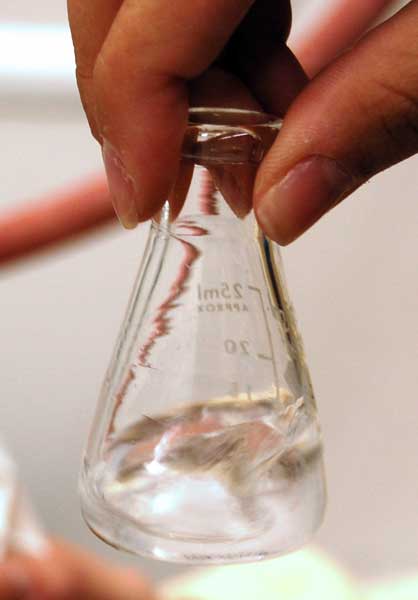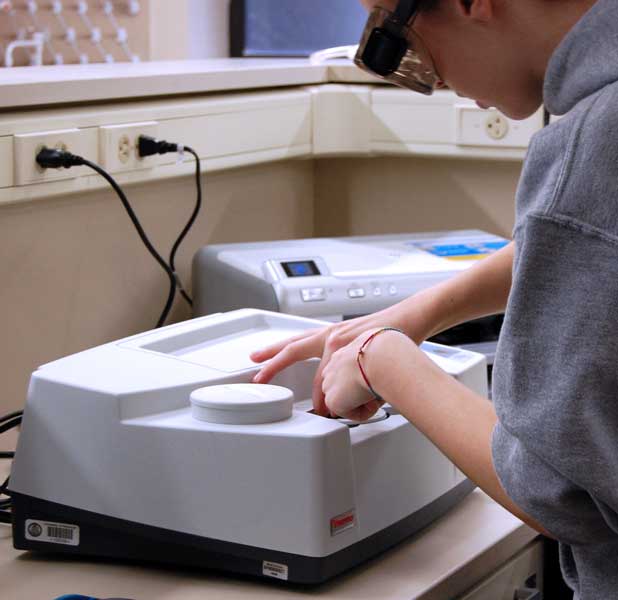







Goal: The goal of this week’s lab is to synthesize cyclohexene from cyclohexanol using the method of dehydration. You will then test for the presence of the carbon-carbon double bond by the addition of aqueous bromine and characterize your product using IR.
Procedure:
Note: Cyclohexene is a malodorous liquid. To avoid filling the lab with the odor of cyclohexene, work in the hood at all times. Wash all glassware that touches cyclohexene with acetone in
the hood and then clean with soap and water.
When you go to obtain an IR of your product, keep it contained in a
stoppered flask.
1. Place 10 mL of cyclohexanol in a 100-mL round-bottom flask. Add 12 mL of 85% phosphoric acid and several boiling chips. Swirl the flask to mix the layers.
2. Attach the flask to a simple distillation apparatus (p.
166 of OCLSM) using a 50-mL round-bottom flask immersed in an ice-water bath
as the receiving flask .
3. Heat the mixture so that cyclohexene being synthesized begins to slowly
distill. You will need to turn up the heating mantle control to 55% (55 or 70). The
vapor temperature should not be allowed to exceed 100º-150ºC;
record the actual temperature at which the liquid distills.
Continue distilling the mixture until approximately 5 to 10 mL of liquid
remains in the distillation flask.
4. Transfer the material in the receiver flask to a small separatory funnel and wash with one 5-mL portion of 10% sodium carbonate solution (VENT!), then with the two 10-mL portions of the saturated NaCl solution.
5. Transfer the organic liquid to a 25-mL Erlenmeyer flask and dry over anhydrous sodium sulfate.
6. Decant the liquid into a clean, pre-weighed flask and obtain a yield.
7. Test your product for the presence of an alkene with the bromine test. Add a small amount of your product to a test tube.
Then add a few drops of dilute bromine solution.
What happens? What does this
result tell you?
8. Obtain an IR of your product, and compare this to the IR of the starting
material.
IR of Benzophenone
IR of Mineral Oil
| Chemical Information | |
| Name | Structure (2-D) |
| cyclohexanol |  |
| bromine | Br-Br |
| sodium bicarbonate |  |
| phosphoric acid |  |
| magnesium sulfate |  |